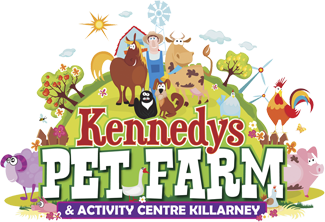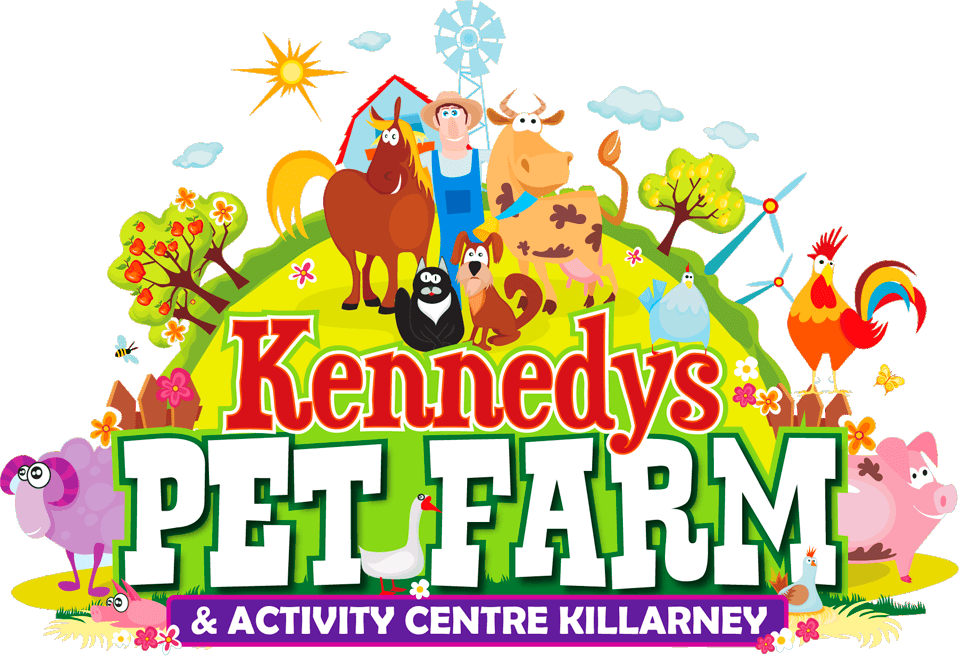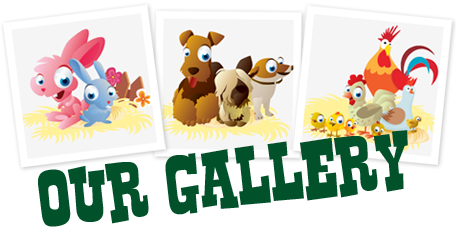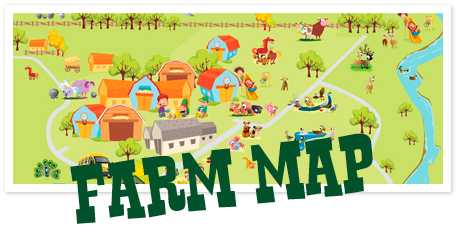Animals at Kennedys Pet Farm

The pet farm has proved to be a great attraction for both young and old. A great advantage is the all weather facilities, indoor playgrounds & indoor little stars playcentre, so come rain or shine the Kennedy family can offer you an exciting day out.
New arrivals on the farm is a regular occurrence and there’s always a happy mother waiting to show off her new babies!
So if you fancy cuddling, feeding or just admiring the large varieties of animals at Kennedys Pet Farm: alpacas, deer, pigs, piglets, horses, calves, sheep, lambs, goats, kids, donkeys, pot bellied pigs, rabbits, duck and ducklings, geese and goslings and ‘Prince’ the peacock – then Kennedy’s Pet Farm is a must for any visitor to Kerry.
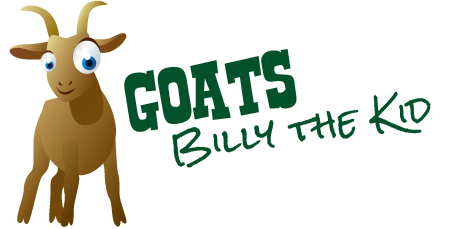
Male – Puck or Billy
Female – Nanny
Baby – Kid
The domesticated goat is from the wild goat of Southwest Asia, Eastern Europe. The goat is closely related to the sheep. Goats are used for their milk, hair and skins. Goats are willing to eat almost anything, including tin cans and cardboard boxes. Aside from sampling many things, goats are actually particular in what they consume- preferring to browse on the tips of woody shrubs and trees. They are very curious and intelligent. They are easily trained to pull carts and walk on leads. Goats are very sure-footed animals and can climb and hold their balance in the most precarious place. They live for 15 to 18 years.
New arrivals on the farm is a regular occurrence and there’s always a happy mother waiting to show off her new babies!
So if you fancy cuddling, feeding or just admiring the large varieties of animals – deer, pigs, piglets, horses, calves, sheep, lambs, goats, kids, donkeys, pot bellied pigs, rabbits, duck and ducklings, geese and goslings and “Prince” the peacock – then Kennedy’s Pet Farm is a must for any visitor to Kerry.

Male – Stallion
Female – Mare
Baby – Foal
The donkey or ass has been used as a working animal for at least 5000 years. In underdeveloped countries the donkey is used principally as draught or pack animals. Donkeys were first domesticated around 3000 B.C. in Egypt. The donkey is a good companion and has worked with humans for millennia. In the poorest countries they have a life expectancy of 12 to 15 years, in more prosperous countries they may have a life span of 30 to 50 years. The loud call of a donkey is called a bray.
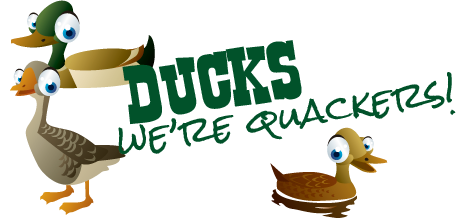
Male – Drake
Female – Duck
Baby – Duckling
Ducks spend a lot of their time on the water so are well adapted for this. They have oils on their outer feathers which make them waterproof and they have a layer of insulating feathers under these called down. These layers allow them to stay warm and dry in the wet and cold. They also have webbed feet to enable them to paddle faster through the water.

Female – Mare
Male – Stallion
Baby – Foal
The Falabelle is a miniature horse. It has been bred on the Falabelle ranch in Argentina for 150 years. Its story began in 1845 when an Irishman named Patrick Newtall discovered that the tribes of Pampas Indians had some unusually small horses along with their larger riding horses. He managed to get some and by 1853 he had created a herd of small, perfectly built little horses around 102cm. The Falabelle is greater and docile around people. They are long lived and hardy and cope well with cold weather.
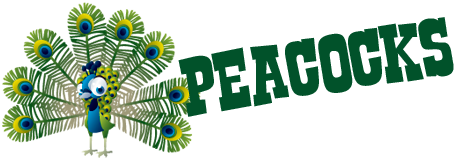
Male – Peacock
Female – Peahen
Baby – Peachick
Peacocks are the national bird of India. Peacocks use their colourful tail feathers to attract a male. They shed the tail at the end of the mating season and grow a bigger one for the following season. The peahen has dull coloured feathers to help her hide while sitting on her eggs. It takes a peahen about 6months to hatch her chicks.
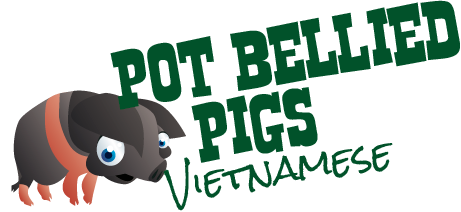
Dad – Boar
Mom – Sow
Baby – Piglet
Sows can have up to 2 litters of piglets a year. They can have up to 14 piglets at a time but usually have between 5 and 8. Pigs are the only animals besides humans who suffer from sun burn, that is why they like rolling in the mud.

Red Golden / Yellow / Reeves / Silver Pheasant
In the bird kingdom the male bird is nearly always more colourful then the female. The male feathers or plumage are a way from him to attract a mate. The male with the longest tail or most colourful feathers is usually he most attractive to the female. The female is usually a duller colour so as to camouflage herself effectively when sitting on her eggs.
